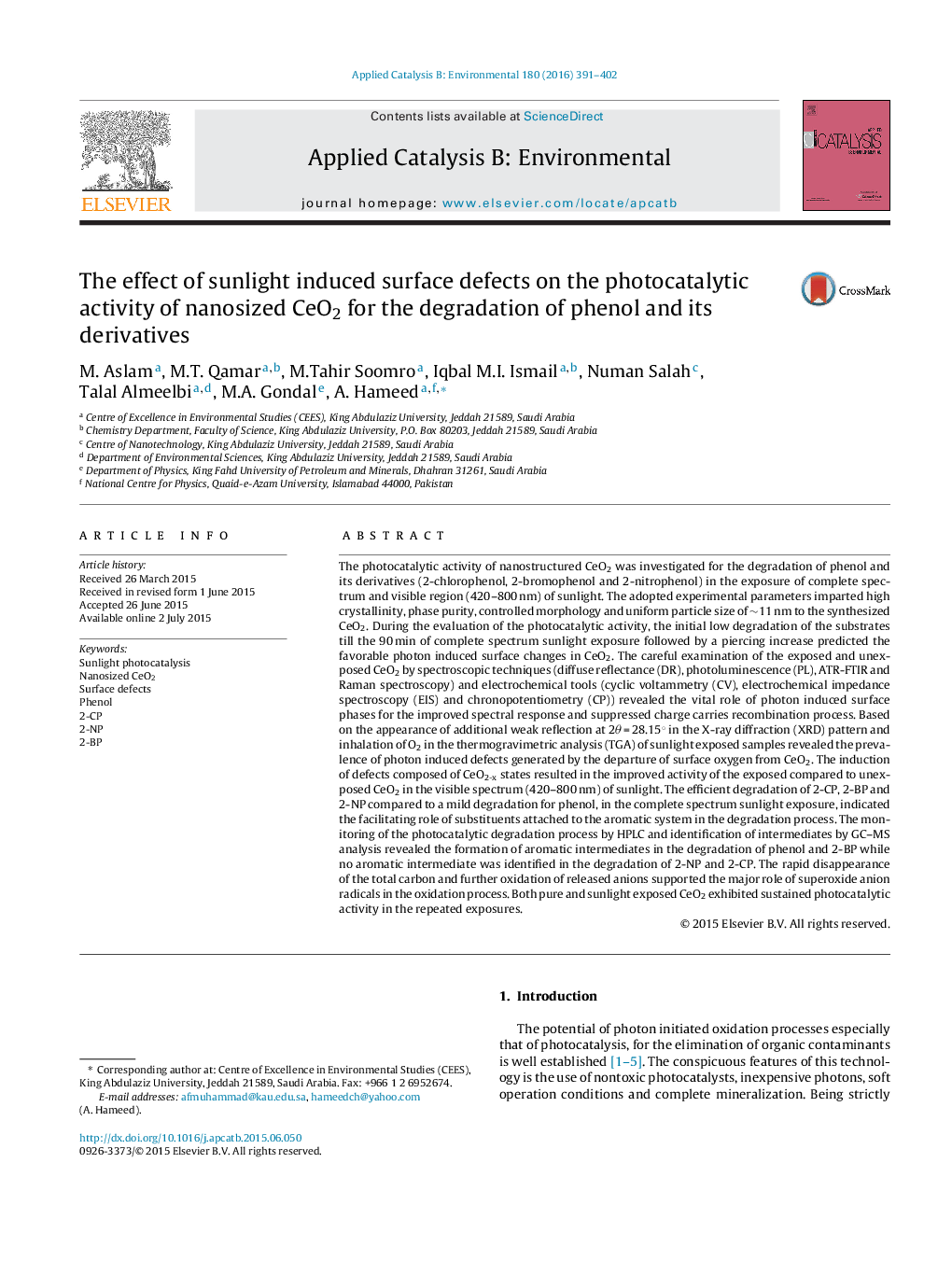| کد مقاله | کد نشریه | سال انتشار | مقاله انگلیسی | نسخه تمام متن |
|---|---|---|---|---|
| 45256 | 46407 | 2016 | 12 صفحه PDF | دانلود رایگان |

• The interaction of UV photons induces defects at the surface of CeO2.
• The identification of defects revealed the formation of surface CeO2-x.
• The surface phases enhance the photocatalytic activity.
• A green approach to enhance the performance of CeO2.
The photocatalytic activity of nanostructured CeO2 was investigated for the degradation of phenol and its derivatives (2-chlorophenol, 2-bromophenol and 2-nitrophenol) in the exposure of complete spectrum and visible region (420–800 nm) of sunlight. The adopted experimental parameters imparted high crystallinity, phase purity, controlled morphology and uniform particle size of ∼11 nm to the synthesized CeO2. During the evaluation of the photocatalytic activity, the initial low degradation of the substrates till the 90 min of complete spectrum sunlight exposure followed by a piercing increase predicted the favorable photon induced surface changes in CeO2. The careful examination of the exposed and unexposed CeO2 by spectroscopic techniques (diffuse reflectance (DR), photoluminescence (PL), ATR-FTIR and Raman spectroscopy) and electrochemical tools (cyclic voltammetry (CV), electrochemical impedance spectroscopy (EIS) and chronopotentiometry (CP)) revealed the vital role of photon induced surface phases for the improved spectral response and suppressed charge carries recombination process. Based on the appearance of additional weak reflection at 2θ = 28.15° in the X-ray diffraction (XRD) pattern and inhalation of O2 in the thermogravimetric analysis (TGA) of sunlight exposed samples revealed the prevalence of photon induced defects generated by the departure of surface oxygen from CeO2. The induction of defects composed of CeO2-x states resulted in the improved activity of the exposed compared to unexposed CeO2 in the visible spectrum (420–800 nm) of sunlight. The efficient degradation of 2-CP, 2-BP and 2-NP compared to a mild degradation for phenol, in the complete spectrum sunlight exposure, indicated the facilitating role of substituents attached to the aromatic system in the degradation process. The monitoring of the photocatalytic degradation process by HPLC and identification of intermediates by GC–MS analysis revealed the formation of aromatic intermediates in the degradation of phenol and 2-BP while no aromatic intermediate was identified in the degradation of 2-NP and 2-CP. The rapid disappearance of the total carbon and further oxidation of released anions supported the major role of superoxide anion radicals in the oxidation process. Both pure and sunlight exposed CeO2 exhibited sustained photocatalytic activity in the repeated exposures.
Figure optionsDownload as PowerPoint slide
Journal: Applied Catalysis B: Environmental - Volume 180, January 2016, Pages 391–402